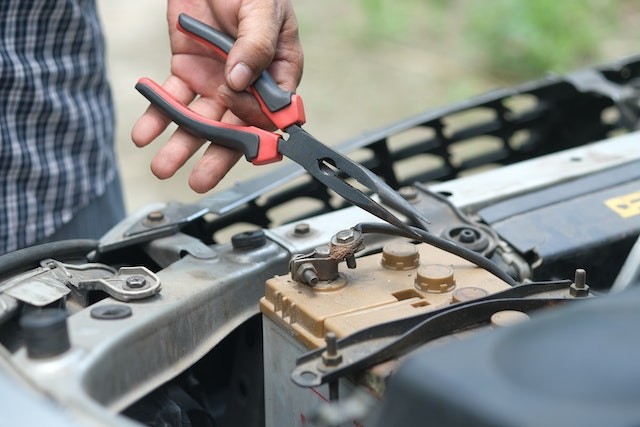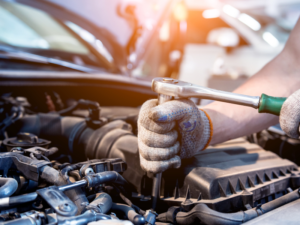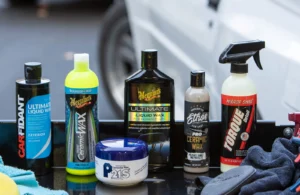Owning a car can be an exciting adventure, but it often comes with its fair share of headaches—especially when repairs are needed. The good news? You don’t always have to shell out big bucks at the mechanic. With just a little know-how and some basic tools, you can tackle many common car repairs yourself. Not only does this save you money, but it also empowers you as a car owner. Ready to roll up your sleeves and dive into some DIY car repair? Let’s explore ten easy fixes that will keep your ride running smoothly without breaking the bank!
10 Common Car Repairs You Can Do Yourself and Save Money
You don’t need to be a mechanic to handle basic car repairs. With a bit of guidance, you can save money and time by doing these fixes yourself. From changing wiper blades to replacing headlights, many tasks are straightforward.
Using a code reader can help diagnose issues quickly, giving you confidence in tackling repairs. Cleaning the EGR valve or fixing a dim headlight might seem daunting but can often be accomplished with simple tools.
Even more complex jobs like replacing sway bar end links or fixing leaks become manageable when broken down into steps. Embrace DIY car repair—it’s rewarding!
Use a Code Reader
A code reader is an invaluable tool for any DIY car repair enthusiast. It connects to your vehicle’s computer and retrieves diagnostic trouble codes (DTCs). This can save you time and money by pinpointing issues before they escalate.
Using a code reader is straightforward. Simply plug it into the OBD-II port, typically located beneath the dashboard. Follow the on-screen instructions, and you’ll get insights into what’s wrong with your car.
Once you have the codes, research their meanings online or in your vehicle’s manual. Armed with this information, you can tackle repairs yourself or know exactly what to discuss with a mechanic.
Replace Your Wiper Blades
Worn-out wiper blades can turn a light rain into a visibility nightmare. They often leave streaks or skip altogether, making it hard to see the road ahead. Thankfully, replacing them is an easy DIY task.
Start by selecting the correct size for your vehicle. Most auto parts stores provide guides to help you choose wisely. Once you’re ready, lift the wiper arm away from the windshield and press the release tab to remove the old blade.
Align the new blade with the hook on your wiper arm and snap it into place. Give everything a quick test by turning on your wipers—it’s that simple!
Service Your ‘Tuck-Under’ Spare Tire Lift Now!
One often-overlooked aspect of car maintenance is servicing your spare tire lift. If you drive an SUV or a truck, this ‘tuck-under’ system is crucial for securing your spare tire safely underneath the vehicle. Over time, dirt and rust can affect its functionality.
Regularly checking and lubricating the lift mechanism can prevent it from seizing up when you need it most. A little grease goes a long way in ensuring ease of operation.
Don’t wait until you’re stranded with a flat to realize it’s stuck! Make this simple DIY repair part of your routine maintenance schedule.
Solve Rough Idle by Cleaning EGR Valve
Experiencing a rough idle? Your EGR (Exhaust Gas Recirculation) valve could be the culprit. Over time, carbon buildup can clog the valve, causing poor engine performance and uneven idling. Cleaning it is a straightforward DIY car repair that can restore smooth operation.
To tackle this job, you’ll need some basic tools: a socket set, cleaning solvent, and possibly a new gasket. Start by disconnecting the battery for safety. Then remove the valve from its housing and thoroughly clean all surfaces to eliminate any debris.
After reassembly, reconnect everything carefully. With your EGR valve cleaned up, you should notice an immediate improvement in how your vehicle runs!
Fix a Leaking Valve Cover Gasket
A leaking valve cover gasket can lead to significant engine problems. It’s a common issue that many car owners encounter. Identifying the leak early can save you from costly repairs down the line.
To fix it, start by removing any components blocking access to the valve cover. Clean the area thoroughly before gently prying off the old gasket.
Apply a new gasket or sealant and reposition everything carefully. Tighten bolts in a criss-cross pattern to ensure an even seal. This simple DIY car repair can enhance your engine’s performance and keep oil where it belongs!
Replace Sway Bar End Links
Replacing sway bar end links is a simple yet effective DIY car repair that can enhance your vehicle’s handling. If you notice clunking noises while driving over bumps, it’s time to check these parts.
Begin by lifting your car safely and removing the wheels for better access. The end links connect the sway bar to the suspension components, so take care when detaching them.
Once removed, compare new end links with old ones before installation. Follow manufacturer instructions closely to ensure proper alignment and torque specifications for optimal performance on the road ahead.
Repair a Dim Headlight
A dim headlight can be frustrating and dangerous. It’s essential to see clearly while driving, especially at night. Fortunately, repairing a dim headlight is often straightforward.
Start by checking the bulb. Remove the headlight assembly and inspect for any signs of wear or damage. If it looks cloudy or discolored, replacing the bulb may solve your problem right away.
If the bulb is fine, clean fixtures can help improve brightness. Use a plastic polish or toothpaste on foggy lenses to restore clarity. With just a little effort, you can enhance visibility without spending much money on repairs.
Replace Headlights
Replacing headlights is one of the simplest DIY car repairs you can tackle. Most vehicles have a straightforward process for changing these bulbs, so there’s no need to pay a mechanic. Check your owner’s manual for specific instructions tailored to your model.
Before getting started, ensure you’re working with the right replacement bulbs. A quick trip to an auto parts store or online ordering will do the trick. Remember to wear gloves while handling new bulbs; oils from your skin can shorten their lifespan.
Once you’ve got everything ready, simply pop out the old bulb and replace it with the new one. Secure it in place and test before hitting the road!
Fix a Stuck Power Antenna
A stuck power antenna can be a frustrating issue, especially if you enjoy listening to music on the go. The good news is that it’s often an easy DIY car repair. Start by checking for any debris or damage around the base of the antenna. Sometimes, dirt buildup can cause it to jam.
Next, try applying some lubricant directly onto the mechanism. This can help free up any stuck parts and allow your antenna to function smoothly again. If lubrication doesn’t work, consider removing and inspecting the entire assembly for wear or broken components.
Replacing a faulty power antenna might seem daunting, but with a little patience and basic tools, you can tackle this task yourself. Plus, it’s sure to save you money compared to taking your vehicle in for repairs!
Fix a Horn Problem
A functioning horn is essential for safety. If your car’s horn isn’t working, it could be a simple fix. Start by checking the fuse associated with the horn in your vehicle’s fuse box. If that’s intact, inspect the wiring and connections to ensure everything is secure.
Next, test the horn itself; sometimes they just get stuck or corroded over time. Giving them a gentle tap can help free any blockages. Replacing a faulty horn relay might also do the trick. With these steps, you can restore your car’s ability to communicate on the road without relying on expensive repairs at a shop.
Taking care of common car repairs yourself not only saves money but also gives you valuable skills and confidence as an owner!


